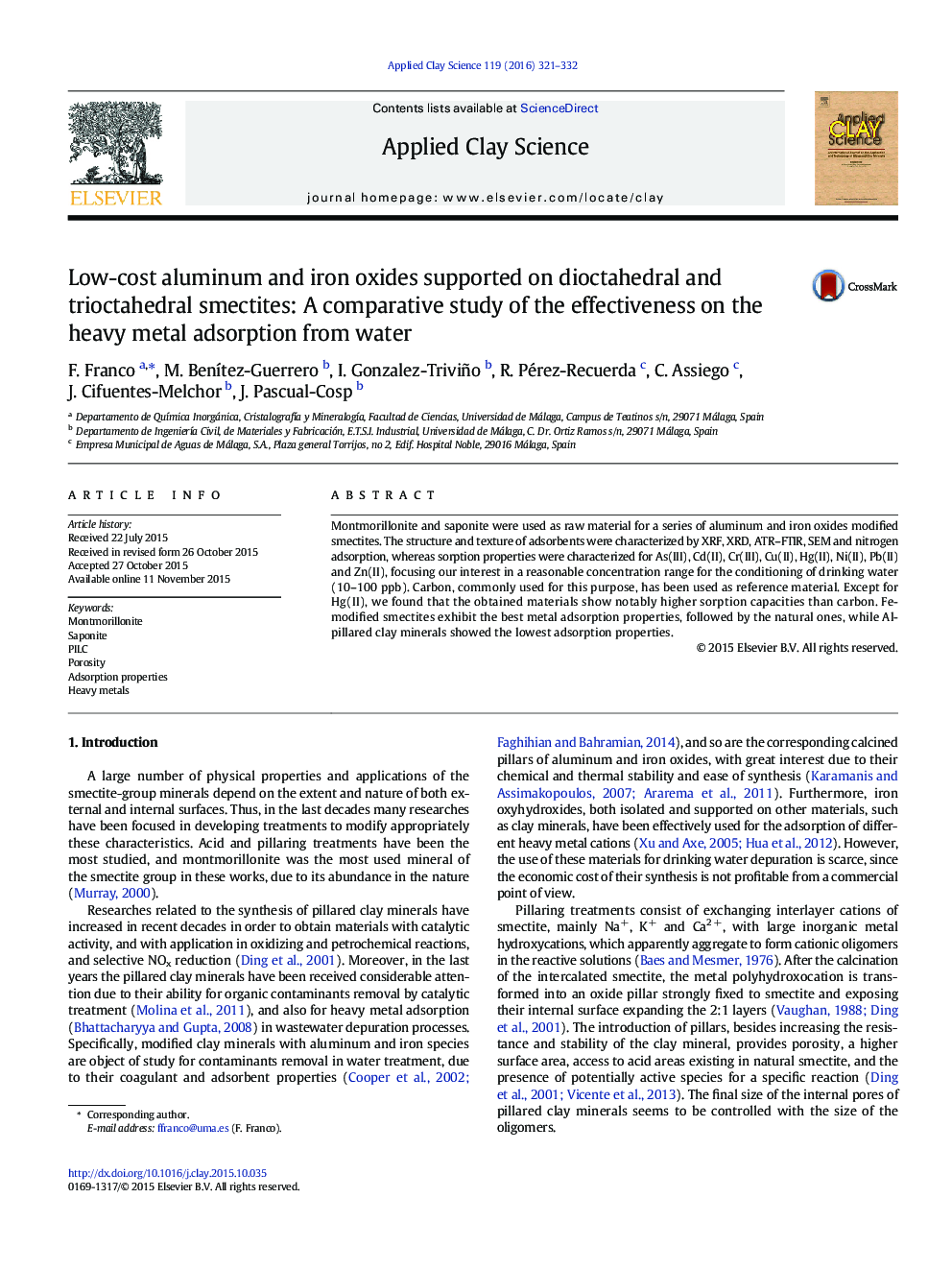| Article ID | Journal | Published Year | Pages | File Type |
|---|---|---|---|---|
| 1694225 | Applied Clay Science | 2016 | 12 Pages |
•We study the influence of supporting Al- and Fe-oxides in the structure and texture of smectites.•Al-adding leads to a PILC with the highest specific surface area.•Fe-PILCs are highly stacking disordered samples.•Except for Hg(II), smectites and Fe- and Al-treated samples show higher sorption properties than carbon.•Fe-treated samples exhibit the best metal adsorption properties.
Montmorillonite and saponite were used as raw material for a series of aluminum and iron oxides modified smectites. The structure and texture of adsorbents were characterized by XRF, XRD, ATR–FTIR, SEM and nitrogen adsorption, whereas sorption properties were characterized for As(III), Cd(II), Cr(III), Cu(II), Hg(II), Ni(II), Pb(II) and Zn(II), focusing our interest in a reasonable concentration range for the conditioning of drinking water (10–100 ppb). Carbon, commonly used for this purpose, has been used as reference material. Except for Hg(II), we found that the obtained materials show notably higher sorption capacities than carbon. Fe-modified smectites exhibit the best metal adsorption properties, followed by the natural ones, while Al-pillared clay minerals showed the lowest adsorption properties.
